By the Numbers: 54
The number of National Park Service sites in the Chesapeake Bay watershed

Last year, the National Park Service celebrated a century of preserving natural and cultural resources across the United States. With parks, preserves, monuments, memorials, footpaths, parkways and more in every state and four U.S. territories, the agency connects millions of visitors each year with outdoor places. In the Chesapeake Bay watershed alone, the National Park Service operates 54 sites. Learn about six sites that each have a different distinction below.
1. Kenilworth Park and Aquatic Gardens (Washington, D.C.). Established in 1938, the natural wetlands and manmade ponds in this park along the Anacostia River were once owned by a Civil War veteran named Walter Shaw. In the late nineteenth century, Shaw turned a personal interest in raising waterlilies into a booming business that was later assumed by his daughter, Helen. When efforts to remove excess silt from the Anacostia threatened the gardens, Helen fought to safeguard the land. The U.S. Department of the Interior stepped in to purchase and protect eight acres. Today, Kenilworth Park and Aquatic Gardens is the only National Park Service site devoted to the propagation and display of aquatic plants. Thousands of waterlilies and lotuses in more than 40 ponds bloom in June and July, and an annual festival celebrates the flowers.
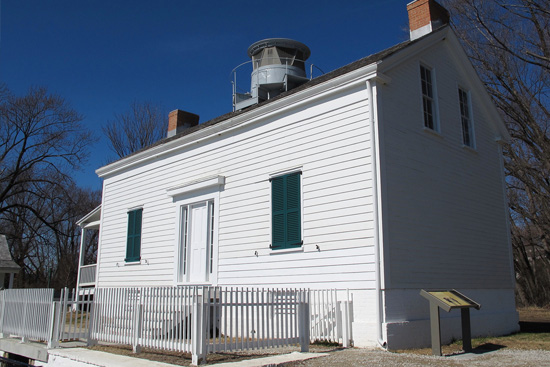
2. Jones Point Park (McLean, Virginia). Established in 1964, the freshwater marsh in this park on the Potomac River was once a bustling hub of transportation and recreation. In 1856, the Jones Point Lighthouse became a navigational aid to merchant, passenger and fishing vessels traveling along the Potomac River and naval ships approaching Washington Navy Yard. Its beam of light could be seen for nine miles, and it operated for 70 years. In 1926, a light tower replaced the lighthouse and the historic structure was given to the Daughters of the American Revolution (DAR) to maintain as a museum. While the 1936 construction of a military facility closed the site to the public, it was reopened in 1953. Floods and vandals had eroded the shores and damaged the lighthouse, so the DAR transferred the property back to the federal government for its protection. Today, the Jones Point Lighthouse is the last remaining riverine lighthouse in Virginia. A cornerstone from an eighteenth-century survey of the District of Columbia’s borders remains in an adjacent seawall.
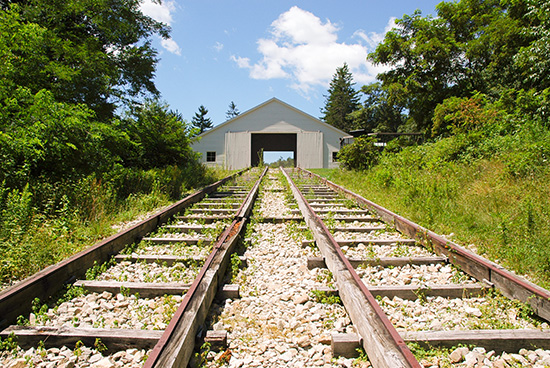
3. Allegheny Portage Railroad National Historic Site (Cresson, Pennsylvania). Between 1834 and 1854, the Allegheny Portage Railroad carried boats moving along the Pennsylvania Canal over the Allegheny Mountains. Built to compete with the Erie Canal, the portage railroad supported continuous barge traffic between the Ohio and Susquehanna rivers, completed the first direct route between Philadelphia and Pittsburgh, and included the first railroad tunnel (and third tunnel of any kind) in the United States. At 36 miles long, the portage railroad used a series of inclines to move railcars over the mountains. Stationary steam engines lifted and lowered railcars up and down the inclines, while horses pulled railcars along the flat sections of rail. Fully loaded canal boats could carry thousands of pounds of cargo and passengers and make a trip that once required a 23-day wagon ride in four days. While the portage railroad was technologically advanced for its time, it closed when the Pennsylvania Railroad completed a more advanced rail link over the mountains. Today, remains of the Allegheny Portage Railroad are preserved by the National Park Service on a 1,296-acre site.
4. Wolf Trap National Park for the Performing Arts (Vienna, Virginia). Established in 1966, this park sits on former farmland donated to the government by a philanthropist named Catherine Filene Shouse. Between 1930 and 1956, Shouse acquired more than 150 acres of farmland on which she grew crops, hosted politicians, soldiers on leave and disadvantaged children, and found refuge from life in Washington, D.C. In 1966, she decided to donate 100 acres and the funds to build an amphitheater in order to protect the land from development and allow for the outdoor enjoyment of the arts. Today, the site is operated through a partnership between the National Park Service and the Wolf Trap Foundation. It remains the only National Park Service site dedicated to presenting the performing arts.
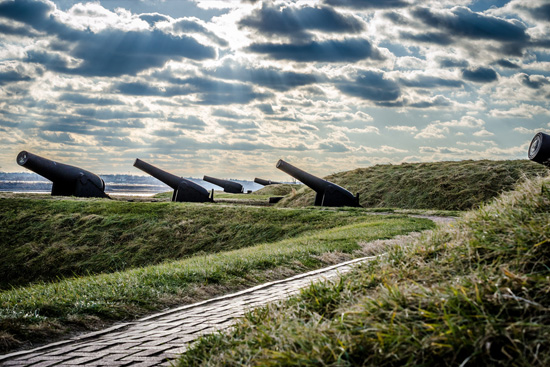
5. Fort McHenry National Monument and Historic Shrine (Baltimore, Maryland). Built at the turn of the nineteenth century, the star-shaped Fort McHenry sits on the Patapsco River and was constructed to protect the city of Baltimore. During the War of 1812, the fort successfully defended Baltimore from a British attack in a bombardment that inspired Francis Scott Key to compose The Star-Spangled Banner. While the fort served as a prison camp for Southern sympathizers and soldiers during the Civil War, it had lost its military value by the late nineteenth century. Following a brief service as a World War I military hospital, Fort McHenry was transferred to the National Park Service in 1933. Six years later, it was designated a national monument and historic shrine—the only such distinction in the national park system.
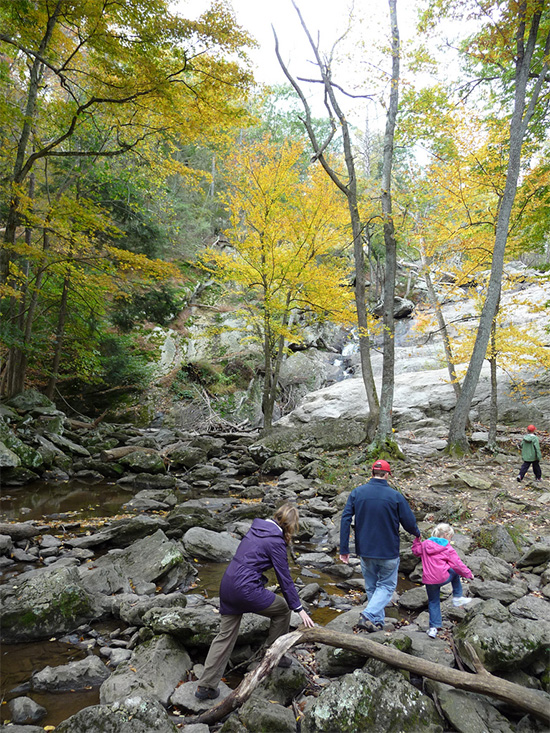
6. Catoctin Mountain Park (Thurmont, Maryland). Established as a park in 1954, this mixed hardwood forest in the Blue Ridge Mountains was originally purchased by the government in 1936 to connect city dwellers with the environment and show that rough terrain, eroded soil and an ecosystem suffering from extensive logging could become productive again. Under the New Deal, the Works Progress Administration built cabins and other facilities in the then-named Catoctin Recreation Area and the Civilian Conservation Corps planted trees and restored streams and meadows.
In 1942, one of the camps in the Catoctin Recreation Area became a presidential retreat. A decade later, President Truman approved a plan to return one portion of the park to the National Park Service and transfer the second portion to the Maryland State Forest and Park System. Twelve years after that, President Johnson drew inspiration from the Civilian Conservation Corps to establish a Job Corps to address rising unemployment and social unrest. A site within Catoctin Mountain Park became home to the nation’s first Job Corps Center. Today, visitors can rent historic cabins and hike through a regenerated “second growth” forest. The presidential retreat—named Camp David by President Eisenhower in 1953—remains closed to the public.
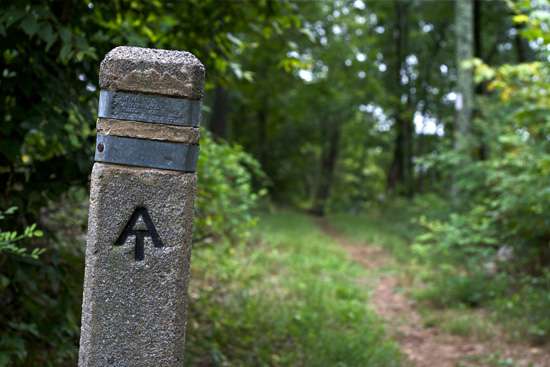
7. Appalachian National Scenic Trail. Established in 1968, this 2,180-mile long footpath runs from Katahdin Mountain in central Maine to Springer Mountain in northern Georgia. Conceived in 1921 and completed by individual citizens in 1937, the 1968 signing of the National Trails System Act formally put the first national scenic trail in place. The trail continues to be used by day hikers, short-term hikers and thru-hikers, who travel along from start to finish in a single season. It is managed by the National Park Service, U.S. Forest Service, Appalachian Trail Conservancy and state agencies and volunteers, and almost all of the land along its course is protected by federal and state ownership. It remains one of the most biodiverse entities in the National Park System and one of the longest continuously marked footpaths in the world.
Learn more about the Chesapeake Bay Program’s work to foster environmental stewardship through access to open space and waterways or find your own Chesapeake Bay experience.

Comments
There are no comments.
Thank you!
Your comment has been received. Before it can be published, the comment will be reviewed by our team to ensure it adheres with our rules of engagement.
Back to recent stories